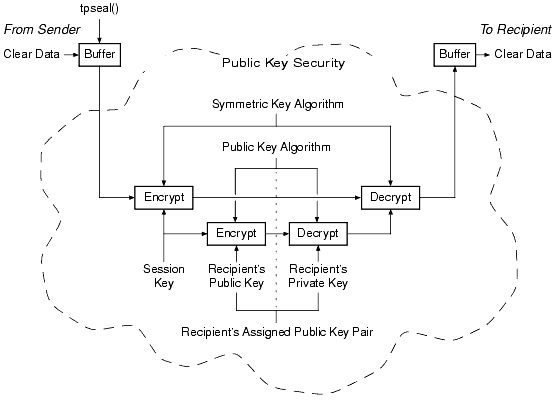


|

|
|
|
|
Message-based Encryption
Message-based encryption keeps data private, which is essential for most applications that transport data over the Internet, whether between companies or between a company and its customers. Data privacy is also critical for applications deployed over insecure internal networks.
Message-based encryption also helps ensure message integrity, because it is more difficult for an attacker to modify a message when the content is obscured.
The scope of protection provided by message-based encryption is end-to-end: a message buffer is protected from the time it leaves the originating process until the time it is received at the destination process. It is protected at all intermediate transit points, including temporary message queues, disk-based queues, and system processes, and during transmission over inter-server network links.
The following figure shows how end-to-end message-based encryption works.
BEA Tuxedo PKCS-7 End-to-End Encryption

The message is encrypted by a symmetric key algorithm and a session key. Then, the session key is encrypted by the recipient's public key. Next, the recipient decrypts the encrypted session key with the recipient's private key. Finally, the recipient decrypts the encrypted message with the session key to obtain the message content.
Note: The figure does not show two other steps in this process: (1) the data is compressed immediately before the message is encrypted; and (2) the data is uncompressed immediately after the message is decrypted.
Because the unit of encryption is a BEA Tuxedo message buffer, message-based encryption is compatible with all existing BEA Tuxedo programming interfaces and communication paradigms. The encryption process is always the same, whether it is being performed on messages shipped between two processes in a single machine, or on messages sent between two machines through a network.
See Also

|

|

|
|
|
|
Copyright © 2000 BEA Systems, Inc. All rights reserved.
|